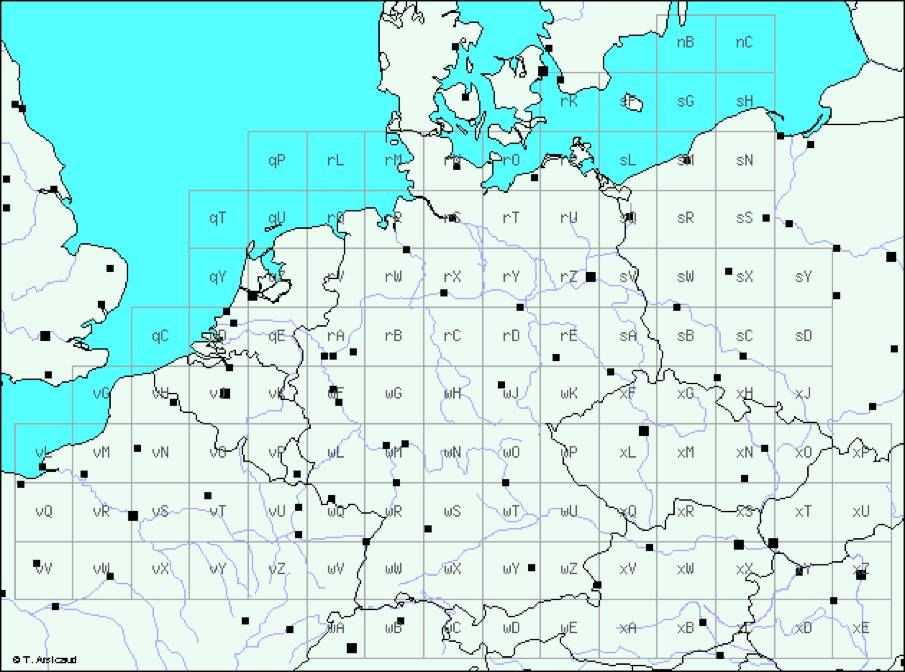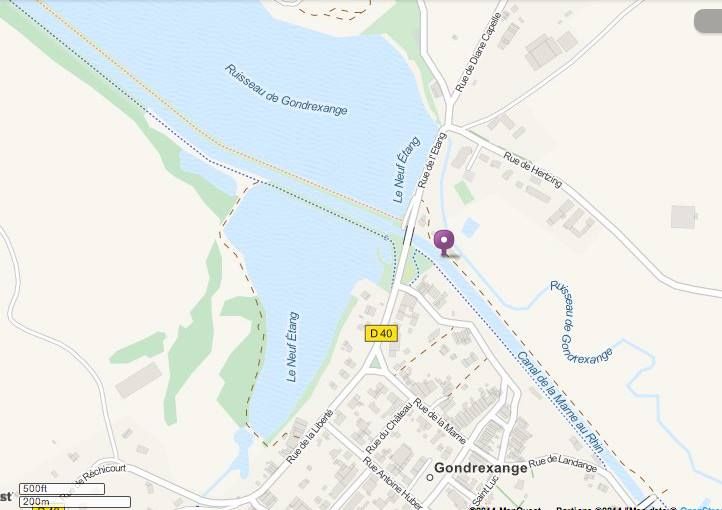I have a bunch of After Action Reports and they all give very specific locations for things that were happening. I'm trying to figure out if there is a way to convert those coordinates into lat/long so I can find those locations. Has anyone had any luck with this? I'm not sure if it is even possible...
An example:
Dragline 3 wants signs "Danger Mines, road not cleared" at 276863
Thanks for any advice on this!
Mikel, it's possible. If you give me more info about your documents, I can extend the map I've started to cover the area you're interested in. I used echodelta.net to make the map, now I use the map as a quick reading reference without having to translate every point all the time.
I've been working on it for about a year. Brian is right to point you to echodelta.net. It's the only source for World War II coordinates that I've found. Most web references for the grid system refer to the Cold War era grids which are different. Brian's explanation of how to use the system is good too. By using the grid translator at echodelta and some original maps I created an overlay of the north east corner of wQ on a google map. The longs/lats produced by echodelta have a margin of error 150 to 1000 meters, but I cross referenced the results of the translator with some original field maps I have access to and added my own calculation to correct the margin of error. It works very well for me: Nord de Guerre Grid wQ
This is for my interest in the Battle of Reipertswiller (Jan '45) which happened to include the 36th Engineer Regiment. It's on the same map grid that Brian mentioned above. The Facebook group for the 45th in WWII has collected hundreds of documents from the Archives; monthly journals, S-2 reports, war room journals, after action reports etc. They're like minute by minute diaries, most with grid references. The map I made is a handy reading reference as I'm reading the documents. One of the documents, the 36th Engineer sitrep for Jan'45, is also hosted here at the VI corp site and the grid locations in that document can be found on the google map I made.
I made the map by using the translator at echodelta to plot the edges of the area I'm interested in in 1000 meter intervals. I then used the google map line function to snap lines between opposite points giving me a grid of 1 kilometer squares. In the area of battle, I subdivided further in 200 meter squares.
The six digit numbers are precise to 100 meters. To find coordinate 839413 I have to find the intersection of easting 83 (vertical line) and northing 41 (horizontal line). That gives me the zero point for grid 8341. The zero point of grid 8341 is the southwest corner of the square. Then it's 9/10ths to the right and 3/10ths up. I've now located 839413 and within 100 meters of the spot being referenced. 835415 is in the center of grid 8341. Sometimes you'll get an 8 digit number which means the location is trying to be precise to within 10 meters. Four digit numbers were used to locate assembly areas for large units, depots and headquarters without being too precise. You find the most use and most precise grid numbers in artillery reports. When a unit moved from one grid to another, like from vU to wQ you usually see a mention of that in the journals, because it meant you needed a whole new map, but it's a one time mention as the unit is moving.
There are obvious cautions about plotting document entries absolutely. Coordinates were generated in the field, sometimes under fire, so mistakes were made. One of the problems in the battle I'm studying is that a key company's CO was killed and the company was completely lost. For two days they said they were at a certain coordinate, but they were actually 2 kilometers off. You're also following a game of telephone. By the time a coordinate worked it's way up from an artillery FO to battalion, to Regiment, to Division, the number might have been mixed up. I've seen plenty of just plain typos that obviously transposed digits to a location 20 kilometers away.
So yes, possible. And neat.






